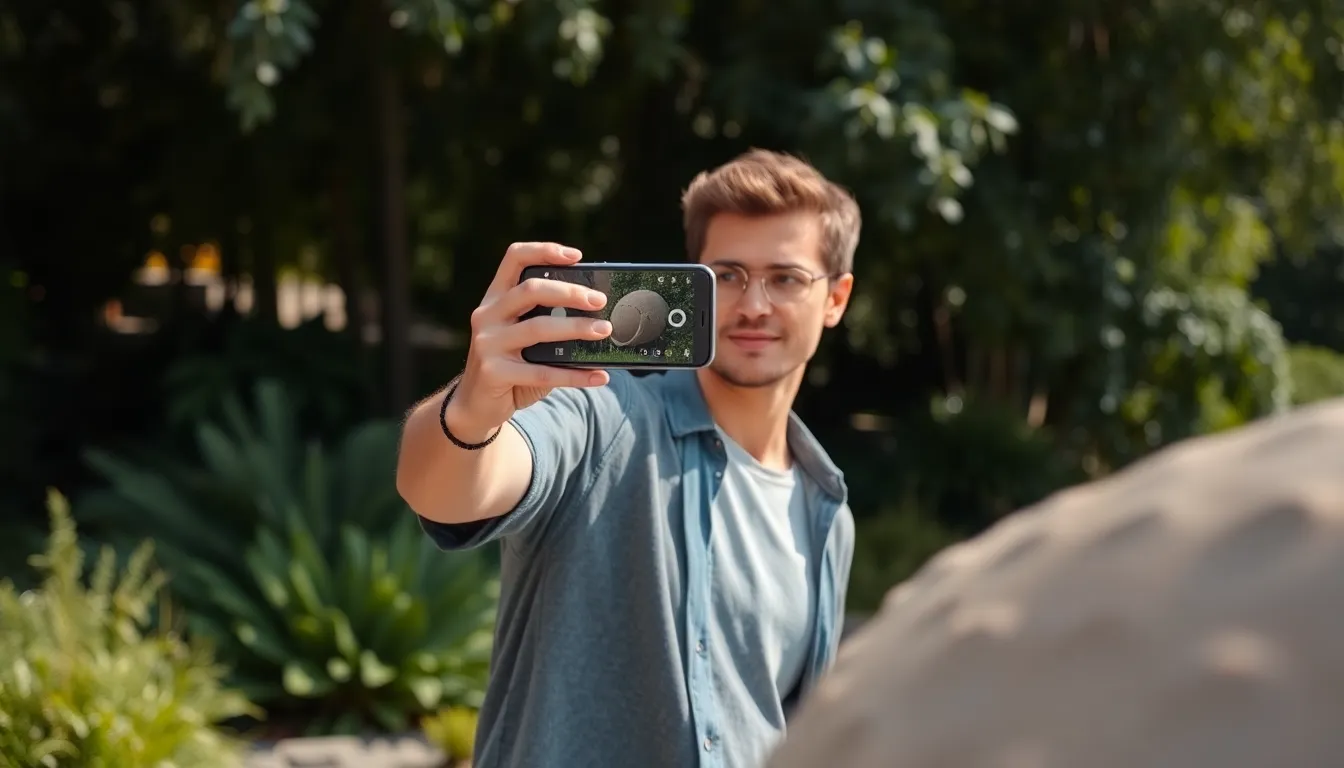Table of Contents
ToggleIn a world where everything seems to be getting bigger—like that slice of pizza you just ordered—knowing how to measure things on an iPhone can be a real game changer. Whether you’re trying to figure out if that new bookshelf will fit in your living room or just want to impress your friends with your newfound measuring skills, the iPhone’s built-in tools have got you covered.
With a few taps and swipes, you can turn your device into a handy measuring tool that’s as accurate as your friend who always knows the best pizza place in town. Say goodbye to squinting at rulers or guessing dimensions. It’s time to embrace the tech at your fingertips and measure with confidence—after all, who doesn’t want to be the measuring maestro of their social circle?
Overview of Measurement Features on iPhone
iPhones offer various measurement features that make them versatile tools for everyday tasks. One prominent function is the Measure app, which utilizes augmented reality (AR) to measure objects and spaces with precision. Users simply point their camera at the object, and the app calculates the dimensions in real time, displaying them on the screen.
Additionally, the Measure app includes a Level tool. This tool helps ensure surfaces are even by providing visual feedback. Users can easily check if a picture frame hangs straight or if a shelf is level, all from their device.
Another feature worth noting is the ability to capture height measurements. Users can measure the height of a person by positioning the iPhone’s camera near their feet and following the on-screen instructions. This feature exemplifies the iPhone’s functionality beyond standard measuring tools.
For more accurate measurements, users can take advantage of the iPhone’s LiDAR scanner, available on select models. The LiDAR scanner enhances depth perception, allowing for highly accurate measurements in various environments. This technology is particularly useful in construction, interior design, and planning.
Voice commands also enhance measurement capabilities. By using Siri commands, users can quickly access the Measure app or take measurements hands-free, streamlining the process.
These features collectively demonstrate how iPhones can replace several traditional measuring tools, offering users both convenience and advanced technology. Embracing these features not only simplifies everyday tasks but also showcases the iPhone’s ability to integrate technology seamlessly into daily life.
Using the Measure App

The Measure app provides a straightforward way to utilize an iPhone for measurements. This tool harnesses augmented reality to deliver accurate data for various needs.
Accessing the Measure App
Begin by locating the Measure app on the iPhone’s Home screen. Tap on the icon to open it immediately. Users can also access the app via Spotlight Search by swiping down on the Home screen and typing “Measure.” The app opens quickly, ready for action. Once launched, the camera activates, allowing for real-time measurement.
Measuring Objects
Point the iPhone’s camera at the object requiring measurement. The app detects edges automatically, marking starting and ending points with a tap. To measure longer distances, tap at the starting point and move the camera to the desired endpoint. The app displays the length in inches or centimeters, depending on settings. Switching between units simplifies adjustments for users. For height measurements, select the height mode, positioning the camera at the person’s feet and moving it to the top of their head, yielding accurate results.
Additional Measurement Tools
Beyond the built-in features, several tools enhance the measuring experience on iPhone devices.
Third-Party Apps
Many third-party apps expand measuring capabilities beyond the Measure app. Applications like SimpleRuler and MeasureKit offer unique functionalities for specific needs. SimpleRuler employs a simple interface for quick linear measurements, while MeasureKit provides additional tools like angles and projections. Users can explore these options to find the best fit for their measuring tasks. Each app presents different features tailored to specific measuring scenarios.
Integrating Augmented Reality
Augmented reality (AR) significantly enhances the measuring experience. Applications leveraging AR provide users with virtual overlays that assist in measuring real-world objects. For example, AR measurement apps enable users to visualize dimensions by projecting virtual lines onto surfaces. This technology allows for more intuitive measuring in environments where accuracy is crucial. Integration of AR in various measuring tools helps users develop a better understanding of space and dimensions. It’s an impressive way to bring technology into everyday measurement tasks.
Tips for Accurate Measurements
Accurate measurements on an iPhone rely on effective usage of its camera and a solid understanding of measurement units.
Best Practices for Using the Camera
Position the camera steady for precise measurements. Hold the iPhone at eye level to align with the object being measured. Adjust the distance for optimal detection; closer proximity often yields better results. Enable good lighting to enhance visibility, reducing confusion in measurements. Avoid reflective surfaces that might interfere with the camera’s accuracy. Promptly follow on-screen instructions, ensuring the app detects edges correctly for clear readouts. Consistent usage of these practices prevents errors and enhances overall accuracy.
Understanding Measurement Units
Familiarity with different measurement units makes interpreting results easier. The Measure app can display measurements in feet, inches, or centimeters; switching between units is simple. Familiarize yourself with the unit preference settings in the iPhone’s Measure app. Knowing how to convert between systems quickly aids in applying measurements in real-world scenarios. Recognize the significance of choosing the right unit for context; this affects perception during projects. Therefore, consistently apply the appropriate unit according to the task at hand to achieve reliable measurements.
Embracing the iPhone as a measuring tool opens up a world of convenience and accuracy. With features like the Measure app and LiDAR capabilities, users can easily measure objects and spaces without traditional tools. The integration of augmented reality enhances the experience, making it intuitive and user-friendly.
By utilizing the tips and techniques outlined, anyone can improve their measuring skills and achieve reliable results. The ability to switch between measurement units and access additional third-party apps further expands the possibilities. Overall, the iPhone transforms everyday measuring tasks into a seamless experience, proving that technology can simplify and enhance daily activities.





